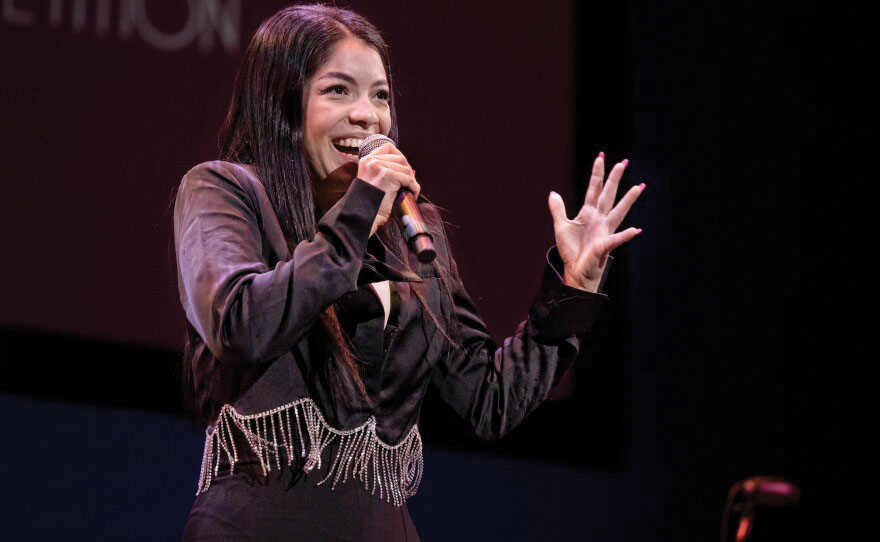More eligible customers can receive up to a $2,000 bill credit under new guidelines
Corporate news
Oakland, Calif. — To provide additional financial assistance to more households with past-due energy bills, Pacific Gas and Electric Company (PG&E) is amending mid-year guidelines for the Energy Assistance Through Community Assistance (REACH) program Asistencia energética a través de ayuda comunitaria (REACH). REACH and the REACH triple match help eligible low- to moderate-income customers pay their past-due energy bills and help prevent service disconnections.
“We want to make sure more customers have the support they need to pay their energy bills,” said Vincent Davis, PG&E Senior Vice President of Customer Experience. “With a stronger bill credit and broader income eligibility, we can provide greater financial relief to households that need it most”
“I understand the hardships currently affecting many residents who are struggling to pay their bills,” said Fresno Mayor Jerry Dyer. “I support any savings initiatives that can be passed along to residents who are struggling financially and have fallen behind on their PG&E bills. “I am hopeful that the REACH program can provide much-needed relief on those residents’ energy bills, and that policymakers will take steps to stabilize them.”
Based on recent customer data, PG&E anticipates that approximately 65,000 additional customers will be eligible for REACH assistance and the REACH triple match under the new guidelines. More than 3,500 applications have been approved in Fresno County since January, resulting in more than $2 million in financial assistance, the highest amount in PG&E’s service territory.
“Many Fresno residents are already struggling with overdue energy bills and are unable to make payments on time. “The REACH program offers critical relief, ensuring that families in some of the highest-poverty areas in the country can stay cool and safe without sacrificing their basic needs,” said Fresno City Council President Annalisa Perea.
PG&E has provided more than $17.2 million in financial assistance to more than 25,000 income-eligible customers through REACH and the REACH triple match since January.
Benefits Expanded and How to Apply
– Duplicate Bill Credit: The maximum credit on a customer’s bill that can be applied to a past due balance has been increased from $1,000 to $2,000 for REACH and REACH Triple Match (the total must not be more than the customer’s past due amount).
– Increased Income Cap: A larger group of income-eligible customers now qualify for REACH Triple Match which provides a 3-to-1 match on customer payments of $50 or more to further reduce an unpaid balance. For example, a family of four earning up to $156,000 a year could qualify for assistance.
– The REACH and REACH Triple Match income limits are set at different thresholds and both use federal income guidelines.-
Amount of Past Due Balance: Eligible customers can now participate in the program regardless of their past due balance, which was previously limited to $2,000. Customers on a payment plan are now also eligible.
– Additional benefits available for 2024 recipients: Eligible customers who already participated in REACH or the REACH triple match will be offered the opportunity to participate a second time under the new guidelines with a total benefit of up to $2,000 available for 2024.
The revised criteria are intended to help more customers cope with high past due amounts, especially during the hot summer months when energy use typically peaks. Information on how to apply for the program is online (aquí) here.
Dollar Energy Fund
PG&E recently contributed $55 million to support the nonprofit Dollar Energy Fund (DEF), marking an expansion of the REACH program. This contribution is funded through PG&E and not from customer rates. DEF operates separately from PG&E.
DEF, a nonprofit entity, administers the REACH program funds, which operate through 170 offices in Northern and Central California. PG&E customers, including those who need language assistance or help with their applications, can contact an agency in their county or apply online at www.hardshiptools.org/MyApp. Applicants can also call 1-800-933-9677 for assistance.
Other Income-Eligible Assistance Programs
PG&E has other assistance programs to help income-eligible customers pay their energy bills:
– California Alternate Rates for Energy (CARE): Provides a monthly discount of 20 percent or more on gas and electric bills. New federal income eligibility guidelines apply.
– Family Electric Rate Assistance (FERA): Provides an 18 percent monthly discount on electricity for households with three or more people. New federal income eligibility guidelines apply.
– Energy Savings Assistance (ESA): Provides energy-saving upgrades at no charge. New federal income eligibility guidelines apply.
– Low-Income Home Energy Assistance Program (LIHEAP): A federally funded, state-supervised assistance program that provides a one-time payment of up to $1,000 on past-due bills to help low-income households pay for heating or cooling their homes.
Other programs include Medical Baseline, which offers a lower monthly rate for customers with certain medical conditions.













